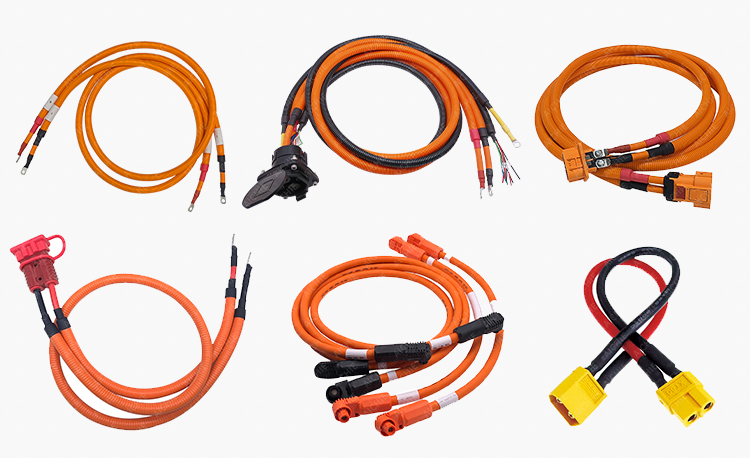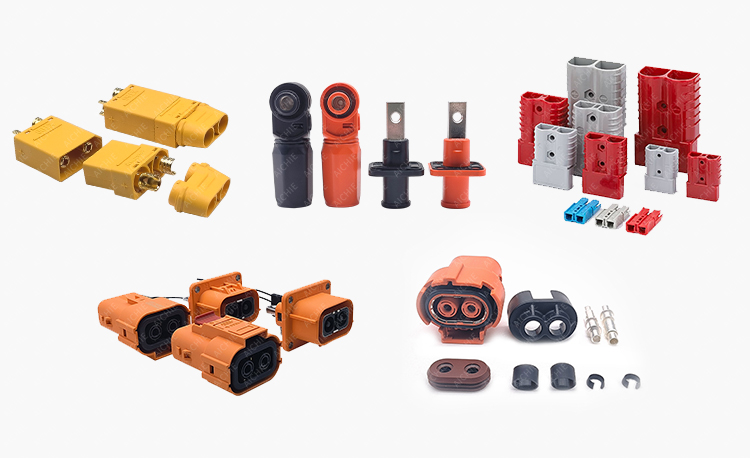New energy vehicle wiring harness classification, safety standards popularization
In recent years, China's new energy vehicle market has continued to usher in favorable policies. Data show that the penetration rate of new energy models exceeded 47% (retail) in June. From a global perspective, the penetration rate of new energy will continue to increase. The domestic market is expected to exceed 12 million new energy sales, the world is expected to exceed 18 million, the global market of new energy penetration will reach 20%. Recently, there are many negative news in the market for the development of new energy vehicles, but as the future global war hot spots are approaching, overseas oil transportation channels will always be an important part of the decision-making. We believe that the development of new energy will continue until the beginning of the next innovative energy to end, and the supply chain of new energy will continue to grow.

New energy vehicle wiring harness is the core component of automotive electrical system, especially in electric vehicles and hybrid electric vehicles have been widely used. New energy vehicle wiring harness is composed of a group of wires, cables, connectors and other electrical components, it plays an important role in connecting and transmitting power, data and control signals, supporting the stable operation and excellent performance of new energy vehicles. New energy vehicle wiring harnesses can be classified according to their functions and connections in the vehicle. The following are some common new energy vehicle wiring harness classification methods:
Power harness: Used to transmit high-voltage power and connect power system components such as battery packs, electric motors (or motors), and electronic control units (ECUs). Power harness usually includes high-voltage cables, battery connection lines, motor connection lines, etc., which carry the power transmission task of electric vehicles.
Signal harness: used to transmit data, communication signals and control signals, used to connect various sensors, ECUs, display screens, vehicle communication systems, etc. These signals are used to monitor and control information such as battery status, motor performance, charging status, etc.
Sensor harness: Specially designed to connect various sensors, such as temperature sensors, speed sensors, position sensors, etc., to monitor the status of the vehicle and provide feedback to the control system. Sensor harnesses typically include lighter weight wires and connectors.
Charging harness: For electric vehicles, the charging harness is used to connect the charging plug, the charging controller and the battery charging interface. They take on the task of charging electric vehicles.
Auxiliary wiring harness: generally used to connect other vehicle systems, such as air conditioning systems, sound systems, lighting systems, etc. The auxiliary wiring harness consists of internal and external circuit connections.
High voltage harness and low voltage harness: Depending on the voltage level, the harness can be divided into high voltage and low voltage harness. High voltage harnesses are mainly used to transmit high voltage (usually battery voltage), while low voltage harnesses are used to transmit lower voltage signals and power supplies.
Front and rear harness: Depending on its position in the vehicle, the harness can be divided into front and rear harnesses. The front wiring harness is usually connected to the front electrical and control system, and the rear wiring harness is connected to the rear electrical and control system, such as electric motors, battery packs, etc.
Modular wiring harnesses: Some new energy vehicle wiring harnesses adopt a modular design, so that different wiring harnesses can be independently manufactured and installed. This design simplifies the manufacturing process and maintenance.

1, power transmission, including cables for the transmission of high voltage power, these cables connected to battery packs, electric motors, electronic control units and other electric vehicle power components These cables must be able to withstand high current loads while maintaining safe and efficient power transmission.
2. Data transmission: includes cables for transmitting data and communication signals, which are used to monitor and control information such as battery status, motor performance, charging status, etc. This data is essential for the proper operation and management of the vehicle.
3. Sensor connection: Various sensors are usually connected, such as temperature sensors, speed sensors, position sensors, etc., to monitor the status of the vehicle and provide feedback to the control system.
4. Electronic Control Unit (ECU) connection: The line connects various ECUs to manage and control various systems of the vehicle, including battery management system (BMS), motor control unit (ECU), braking system, air conditioning system, etc
5. High temperature and corrosion resistance: Considering that new energy vehicles may operate under high temperature or humid conditions, the wiring harness must have high temperature and corrosion resistance characteristics to ensure long-term stable performance
6. Modular design, in order to simplify manufacturing and maintenance, new energy vehicle wiring harnesses usually adopt modular design, so that the wiring harnesses of each subsystem can separately manufacture and install.

1. High current tolerance: New energy vehicle wiring harnesses need to withstand high current loads to transmit the power of the motor and battery system. They typically feature high-quality cables and connectors to ensure efficient power transmission.
2. Data transmission and communication: Generally used to transmit a large number of data, communication signals and control signals to monitor and control battery status, motor performance, etc. This helps improve the management and performance of electric vehicles.
3. Lightweight design: Compared with the complex electrical system of traditional internal combustion engine vehicles, the design of new energy vehicle wiring harnesses is usually lighter, which helps to reduce the weight of the vehicle, improve energy efficiency and driving range.
4. Anti-electromagnetic interference: The electrical system of electric vehicles is more sensitive to electromagnetic interference than traditional vehicles, so new energy vehicle wiring harnesses usually take measures to resist electromagnetic interference to ensure the stability of the system.
5. Safety: The design of new energy vehicle wiring harness takes into account the safety of the battery system, including overcharge and overdischarge protection to reduce potential hazards.
6. Programmability: The control and management of the wiring harness of new energy vehicles can be programmed through software to meet different driving modes and performance requirements, improving the customizability of the vehicle
7. Green environmental protection: The electric system of electric vehicles is relatively clean and does not produce exhaust emissions, which helps to reduce environmental pollution.
Zero-basis science of automotive wiring harnesses - Specifications and standards
The standard of new energy vehicle wiring harnesses is usually affected by international, national or regional norms and regulations to ensure the safety, performance, reliability and compatibility of electric vehicles. Here are some examples of international and national standards related to NEV wiring harnesses:
1.IS0 6469: Standard published by the International Organization for Standardization (ISO), which covers the overall safety requirements for electric vehicles, including specifications for electric vehicle wiring harnesses.
2.ISO 6722: A standard published by ISO detailing the insulation materials, dimensions, properties and test methods of wires and cables for automotive applications, including new energy vehicle wiring harnesses.
3.ISO 15118: This international standard specifies the communication protocols between electric vehicles and charging devices, including requirements regarding electric vehicle charging harnesses.
4.GB/T 18384: China's national standard, covering the safety performance requirements of electric vehicles, including the provisions of electrical wiring harnesses.
5.SAEJ1772: A standard published by the Society of Automotive Engineers (SAE) that specifies the physical connection between electric vehicles and charging devices, including charging harnesses.
6.UL 2580: Standard published by Underwriters Laboratories for the safety performance of wires and cables for electric vehicles The standard published by Underwriters Laboratories applies to the safety performance requirements of wires and cables for electric vehicles.
7.UN ECE R100: Regulations issued by the United Nations Economic Commission for Europe (UNECE) covering the type approval of electric vehicles, including requirements related to wiring harnesses.
8.NEC(National Electrical Code): A standard issued by the National Fire Insurance Association (NFPA), which includes regulations related to the safety and installation of electrical wiring harnesses. These standards and specifications are designed to ensure that the design, manufacturing and installation of new energy vehicle wiring harnesses comply with international safety standards and regulations to ensure the safety and reliability of electric vehicles. When designing and producing new energy vehicle wiring harnesses, automobile manufacturers and suppliers generally need to follow these standards to ensure that their wiring harnesses meet the relevant safety and performance requirements. New energy vehicle wiring harnesses have many advantages over the electrical system wiring harnesses of traditional internal combustion engine vehicles, which can improve the performance, reliability and safety of electric vehicles while also helping to achieve greater energy efficiency and environmental protection.